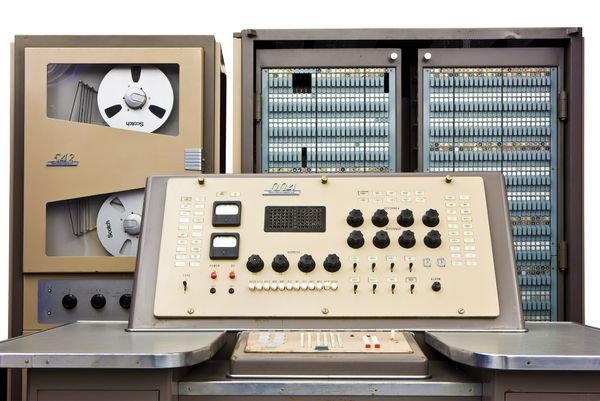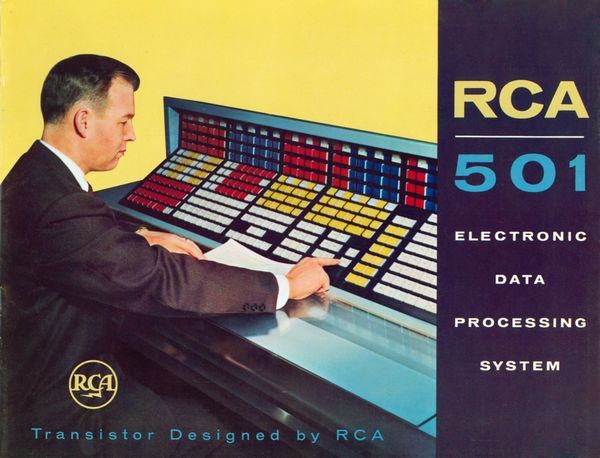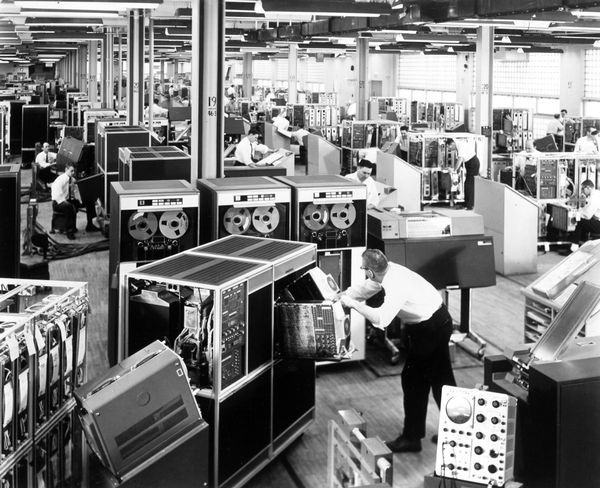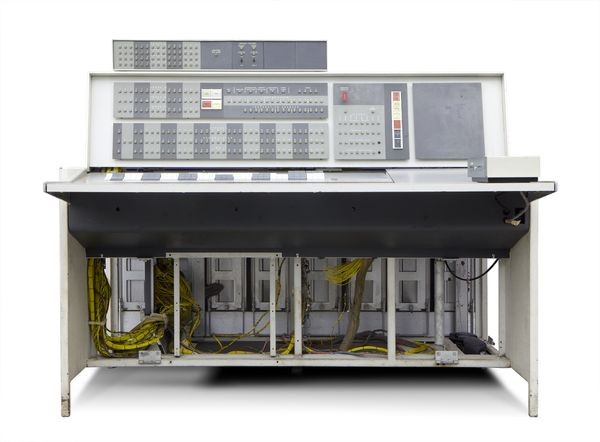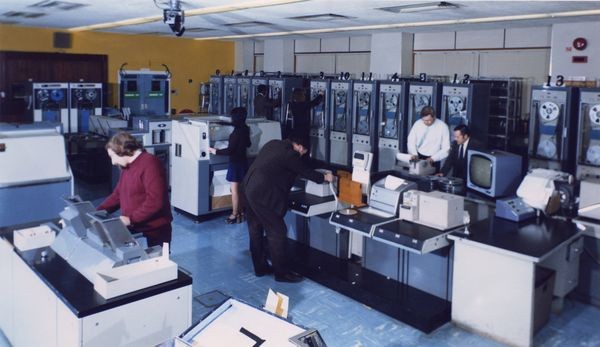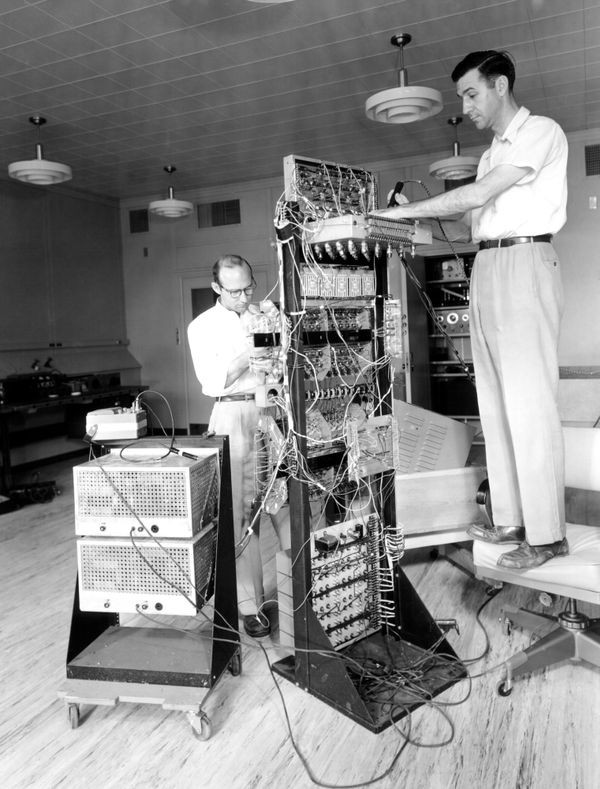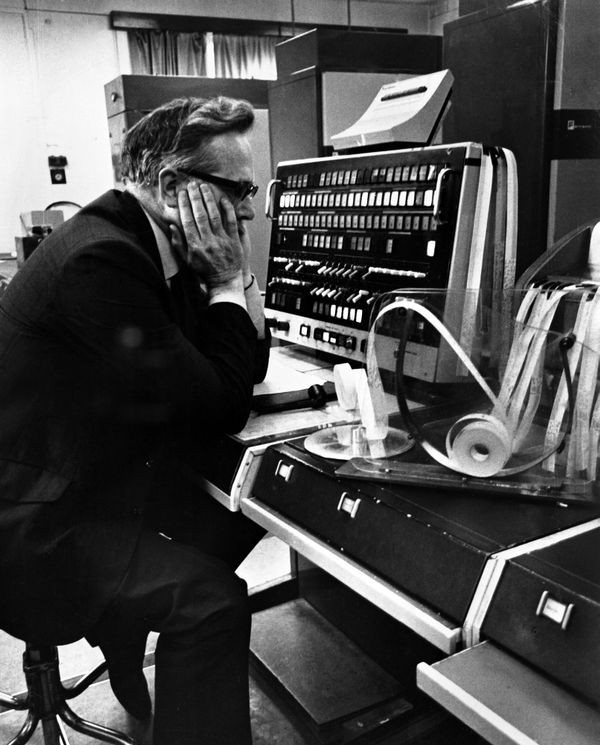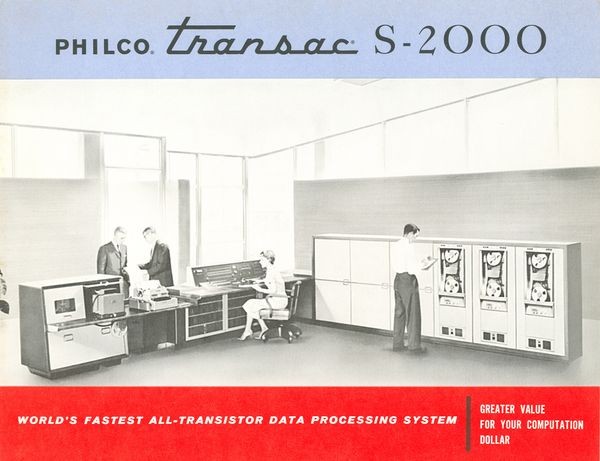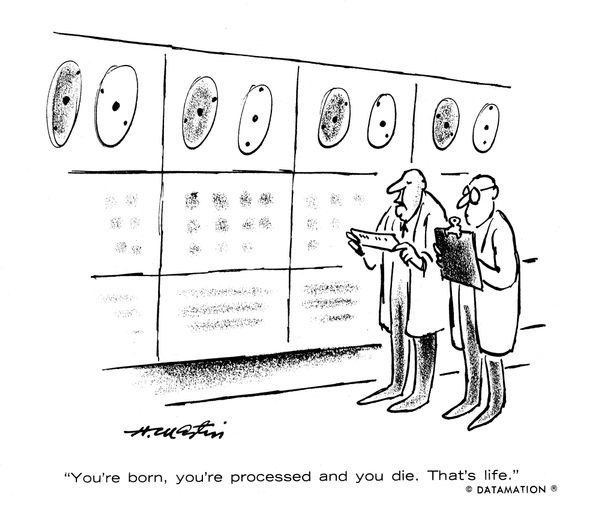The First Mainframes
NEAC 2203 Computer – CPU, console and tape drive
The NEAC 2203, an early transistorized computer, was multi-lingual in several respects: both fixed-point and floating point; and both Roman and Japanese characters. It managed Japan's first on-line, real-time reservation system for Kinki Nippon Railways in 1960.
The First Mainframes
Big businesses with big needs required big computers. Economies of scale also favored large, consolidated computer systems.
This demand for big computers, just when “second generation” transistor-based computers were replacing vacuum-tube machines in the late 1950s, spurred developments in hardware and software. Manufacturers commonly built small numbers of each model, targeting narrowly defined markets.
RCA 501 computer brochure
This early transistorized computer could simultaneously control 63 tape drives. For many business users, quick access to huge data stores outweighed its relatively slow processing.
View Artifact DetailAssembly of IBM 1401 computers
The IBM 1401 was very successful; over 12,000 were sold. Like all early computers, however, 1401s were very labor-intensive to build, with little automation.
View Artifact DetailWhy are they called “Mainframes”?
Nobody knows for sure. There was no mainframe “inventor” who coined the term.
Probably “main frame” originally referred to the frames (designed for telephone switches) holding processor circuits and main memory, separate from racks or cabinets holding other components. Over time, main frame became mainframe and came to mean “big computer.”
Cartoon diagram of a typical mainframe job
This cartoon from an early computing publication shows the steps required in a typical batch-processed job on a punched-card based computer system. This was typical of much computing from the 1950s until well into the 1970s.
View Artifact DetailIBM 7094 Computer – console
The 7094 was a popular and powerful scientific computer of the early 1960s. NASA used it to control Mercury and Gemini space flights. The US Air Force retired its last 7094 from the Ballistic Missile Early Warning System in the 1980s.
View Artifact DetailNew Machines, New Techniques
One key formula didn’t need a computer: More hardware meant more dollars. So computer designers explored ways to increase capabilities without adding to the cost.
Various innovations let computers grow more powerful without growing proportionally bigger. Virtual memory used relatively inexpensive system storage to replicate costlier main memory. Microprogramming employed software with simple hardware to execute commands that otherwise needed complex hardware.
Other techniques included pipelining, overlapping the execution of instructions that required several processing cycles, and spooling, moving data to temporary storage for use by another program.
Atlas Computer, (partial view)
The Atlas computers were the world’s most powerful in their day and Chilton had the biggest of the three built. Atlas pioneered virtual memory, timesharing, pipelining and many other concepts adopted later by other systems.
View Artifact DetailBuilding the ORACLE computer CPU
Engineers test a small part of the arithmetic unit of the ORACLE computer. Hand built in standard racks, ORACLE was the world’s fastest computer in 1953. The complete machine filled several rooms.
View Artifact DetailBurroughs B 5500 computer brochure
The Burroughs 5000-series machines featured innovative and fully integrated hardware and software design. Their operating system was written in the high-level language ALGOL, not in machine or assembly language.
View Artifact DetailTom Kilburn and Atlas console
Trailblazing computer designer Tom Kilburn is on hand at the shutdown of the University of Manchester Atlas in 1971.
View Artifact DetailPhilco Transac S-2000 computer brochure
Philco began in 1906 making electric car batteries as the “Philadelphia Storage Battery Company." Its Transac was among the earliest transistorized computers, but the company’s computer division did not survive. Ford bought Philco in 1961.
View Artifact DetailA reflection on life with computers
As the public increasingly became aware of business and government’s growing reliance on computers in the late 1950s, some wondered whether organizations were more interested in people’s data than in people themselves.
View Artifact Detail